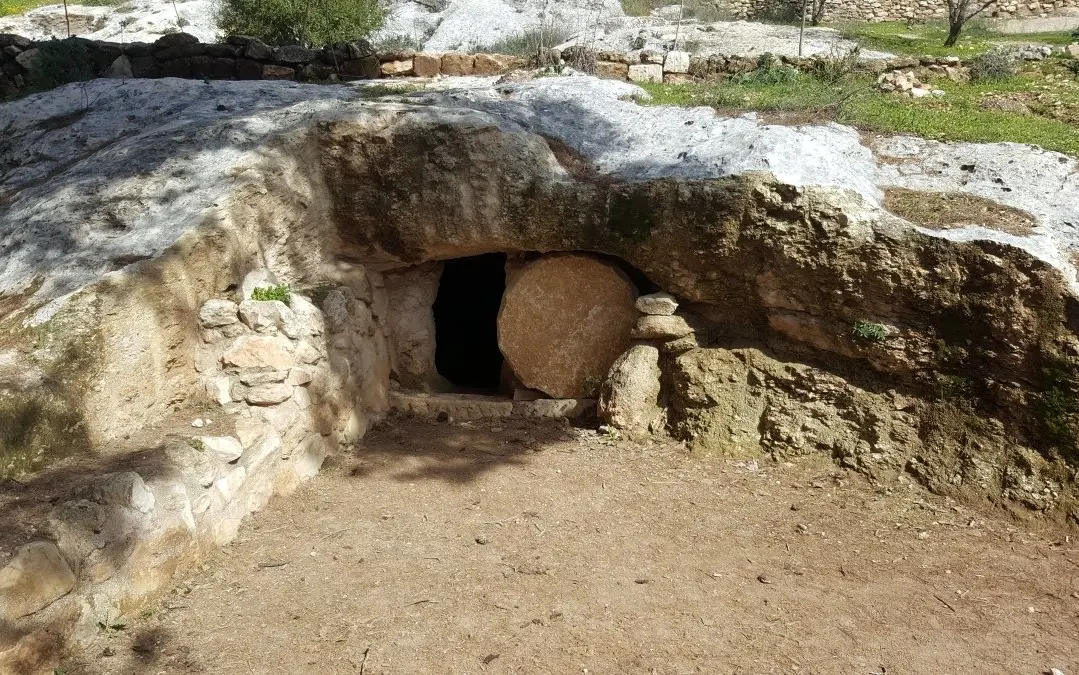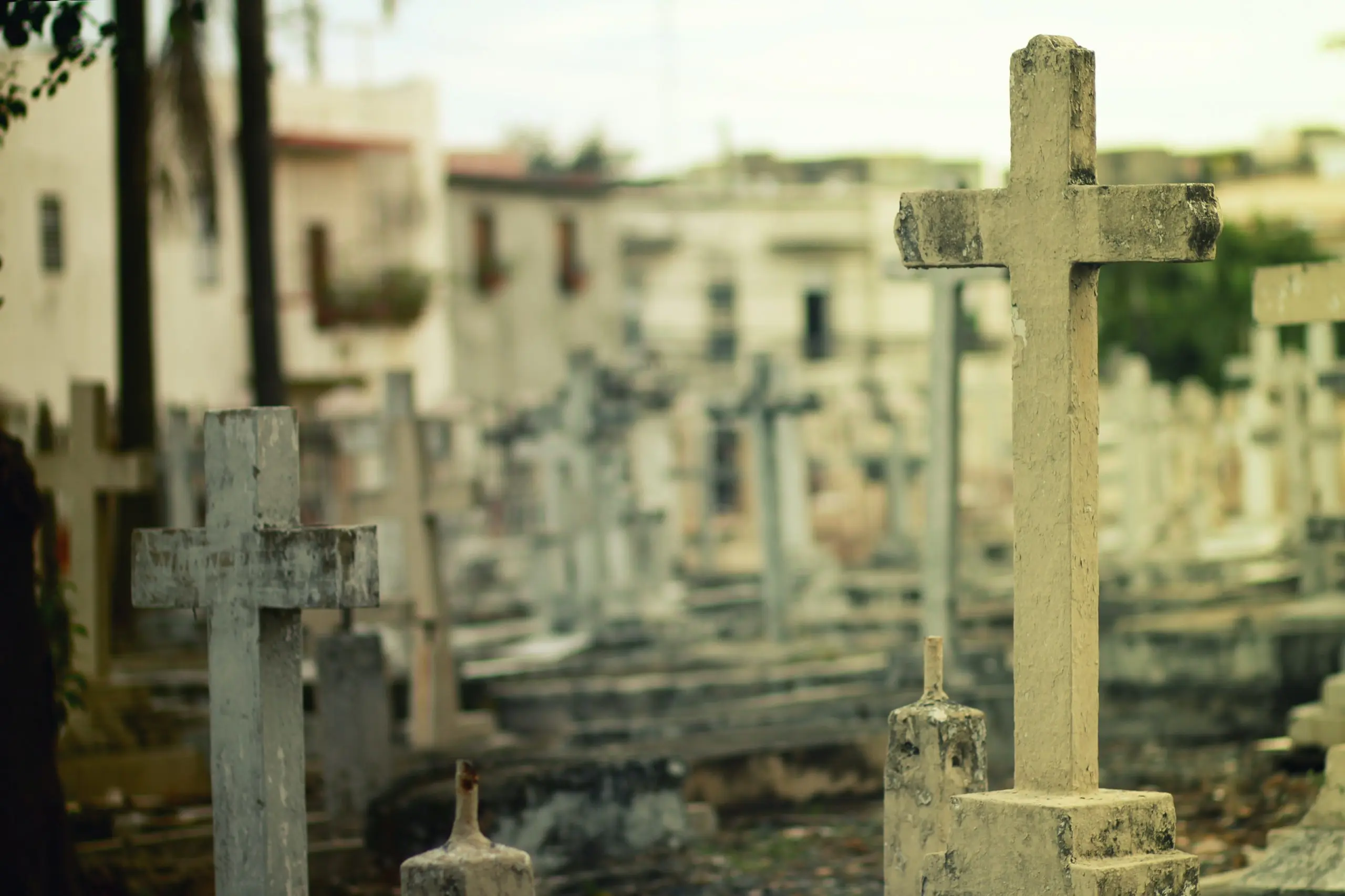In part 1, we explored eight facts surrounding the death of Jesus Christ of Nazareth. Theologians and historians must confront these facts—and those who reject the Resurrection have sought alternative theories (summarized briefly in this part).
Explaining the Tomb
[lead]The tomb of Jesus was either occupied or empty on the first day of the week.[/lead]Here, we give an overview of four explanations offered by those who believe the tomb was occupied on the first day, followed by four naturalistic theories that attempt to explain why the tomb was empty. We end with a summary of skeptic explanations of the post-Resurrection appearances.
[vector_icon icon=”fas fa-headphones-alt” color=”#913c1d”] Listen to more evidence for the Christian faith in the 20 Compelling Evidences That God Exists audiobook (available in print format too).
[vector_icon icon=”fas fa-video” color=”#913c1d”] Also, WATCH A FREE SLIDESHOW summarizing the book.
Occupied Tomb Explanations
#1: Unknown Tomb
One possible argument is that the location of Jesus’ tomb was unknown. This theory contradicts all four Gospel accounts, which state that Joseph of Arimathea obtained Pilate’s permission to bury Jesus’ body in his newly hewn tomb near the crucifixion site. Certainly Joseph knew the location of his own tomb! The accounts also make it clear that the women and disciples had no trouble finding the tomb, and the guard certainly knew the location as well.
#2: Wrong Tomb
This explanation says that the women and disciples went to the wrong tomb. This theory eliminates the “He has risen” of Mark 16:6, arguing that the young man was telling them that they had the wrong tomb, but the women misunderstood. There is no textual basis for changing this verse, and to be true, this theory would have to distort many other verses as well. It also requires the absurd conclusion that Peter and John, eventually Joseph of Arimathea, the guards, and the Jewish and Roman authorities all went to the wrong tomb, and that the correct tomb was never found.
#3: Spiritual Resurrection
This “pious” compromise rejects the physical resurrection of Jesus but holds that He is alive only in some spiritual sense. His appearances to the disciples were genuine, but they misinterpreted the nature of His resurrection. Like the other theories, this one does a severe injustice to the historical accounts. In the post-resurrection narratives, Jesus placed special emphasis on the fact that His body was resurrected:
See My hands and My feet, that it is I Myself; touch Me and see, for a spirit does not have flesh and bones as you see that I have. (Luke 24:39)
And behold, Jesus met them and greeted them. And they came up and took hold of His feet and worshiped Him. (Matthew 28:9)
In addition, John 20:17 tells us Mary clung to Jesus, while Luke 24:42–43 says He ate a piece of broiled fish before the disciples.
#4: Jesus Had a Twin
A fourth explanation is that a twin brother or someone who looked like Jesus was crucified and buried in His place. This desperate theory does not have a bit of evidence to support it and contradicts many clear passages. For example, Jesus bore the marks of His crucifixion and spear wound on His resurrection body (see John 20:24–28), and the disciples saw Him physically ascend into heaven (Acts 1:9).
The only option left is that the tomb where Jesus was laid was empty. Four naturalistic explanations have been offered as an alternative to the Resurrection. These are summarized below.
Empty Tomb Explanation
#1: Friends Stole the Body
The original explanation for the empty tomb was that one or more of his friends stole His body out of the tomb; the soldiers were bribed by the chief priests and elders to lie and say that the disciples stole the body while they were asleep (see Matthew 28:11–15). But think about it: If the members of the guard were sleeping, how could they know that the disciples were responsible? This would also require the entire guard to be asleep at the same time, a circumstance made even more unlikely by the fact that their lives were on the line if the body was stolen. Furthermore, the noise involved in rolling the huge stone away from the entire sepulcher would surely have aroused some of the soldiers from their slumber.
In addition to these problems, neither Joseph of Arimathea nor the disciples would have had any real motive to steal the body. They did not expect the Resurrection to take place and had nothing to gain and everything to lose by perpetrating a deliberate fraud. The disciples endured great suffering because of their testimony about the resurrected Lord, most to the point of death. Such behavior would have been absurd if they knew it was all a lie. This kind of deception is also inconsistent with the high moral character exhibited in their New Testament epistles. Finally, how would this frightened band of men be able to overcome an armed guard of professional soldiers?
#2: Enemies Stole the Body
The theory that enemies of Jesus stole His body from the tomb is also plagued by the problem of motive; why would the Jewish or Roman authorities want to steal the body when this is precisely the thing they sought to avoid? Even if they did remove the body for security purposes, they would have made such a claim and displayed the body, if necessary, to end the rumors of the Resurrection that were circulating in Jerusalem. The complete silence on the part of the Jewish and Roman authorities loudly proclaimed their acknowledgment that the body was inexplicably gone.
#3: Swoon Theory
A third possible explanation is that Jesus “swooned” on the cross and only appeared to be dead. He was resuscitated by the cool air of the tomb, and His disciples were convinced He rose from the dead. This 18th-century rationalistic theory, when analyzed, requires as great a miracle as the Resurrection itself. It means that Jesus endured the beatings at His trials, the crown of thorns, the terrible scourging, the crucifixion, and even the spear thrust in His side and somehow survived. The professional executioners were satisfied that He was dead and His body was wrapped in linen along with 100 pounds of spices. In spite of great loss of blood and many hours in the cold tomb without food, water, or assistance, He revived. Then He managed to escape from the grave-clothes and spices and replace them neatly in the tomb; He rolled the huge stone up an incline away from the opening, overcame the armed guards, walked miles on pierced feet, and convinced His disciples that He had conquered death as the resurrected Author of life.
This ludicrous theory would also have us believe that Jesus lived on after all this and died a natural death in obscurity.
#4: Passover Plot Theory
A fourth naturalistic explanation of the empty tomb is that Jesus wanted to deceive His disciples into thinking He was the Messiah by engineering His fulfillment of the Old Testament messianic passages. One specific explanation centers around a speculated plot between Jesus and Joseph of Arimathea; this fanciful scenario appears in The Passover Plot, the brainchild of Hugh Schonfield. It requires at least as great a distortion of the historical accounts as the previous theories. Schonfield simply rejects the many passages that disprove his theory and builds on a few verses taken completely out of context. This anti-Resurrection theory is totally bereft of evidence, and it makes Jesus a malicious deceiver and the disciples a band of gullible fools.
Conclusion About the Tomb
None of these theories even comes close to accounting for the historical facts associated with the empty tomb, the appearances of the resurrected Christ, and the radical changes in the lives of the disciples. They distort the clear evidence without any basis and require more faith to believe than the Resurrection itself.
It is ironic that the chief priests and the Pharisees made such an effort to have the tomb secured, because had they not done so, the case for the Resurrection would not have been as strong.
It is ironic that the chief priests and the Pharisees made such an effort to have the tomb secured, because had they not done so, the case for the Resurrection would not have been as strong.
—Ken Boa & Larry Moody
Explaining the Appearances
Three explanations are often given by skeptics to try to account for Jesus’ post-Resurrection appearances. Each of these is described in more detail in my book (written with Larry Moody) I’m Glad You Asked.
- Witnesses (including all the disciples) lied about seeing the resurrected Jesus. Besides other reasons, this one is unlikely, because it’s doubtful so many people would have willingly given up their lives for a fraud.
- The appearances were mere hallucinations in the disciples’ minds. This theory doesn’t fit the facts for multiple reasons, starting with the fact that hallucinations are private, not publicly shared, experiences. Also, they’re usually restricted to favorable times of day and places (not so with Christ), to certain kinds of people (yet Jesus appeared to multiple personality types), typically recur rather than suddenly ceasing (as happened with Christ), and are stimulated by expectation (the Gospels record disciples’ initial skepticism of the reports of His appearances). Also, hallucinations aren’t characterized by physical experiences (e.g., touching, talking, and eating).
- The whole story is simply an elaborate legend. The reliability of the Bible comes into play in this answer; the accounts recorded in the Bible were further backed up by eyewitness testimonies and circulated without being challenged by friends or enemies of Jesus. (See more here on biblical accuracy.)
In the next and final part in this series, we’ll look at the strong circumstantial evidence for the Resurrection.
WATCH Ken teach this material in a sermon from Easter Sunday 2018. [vector_icon icon=”fas fa-video” color=”#dd9933″]



